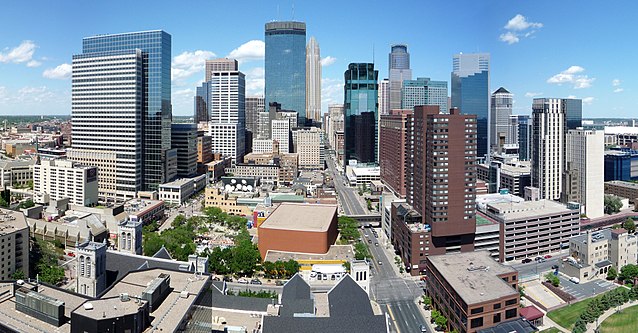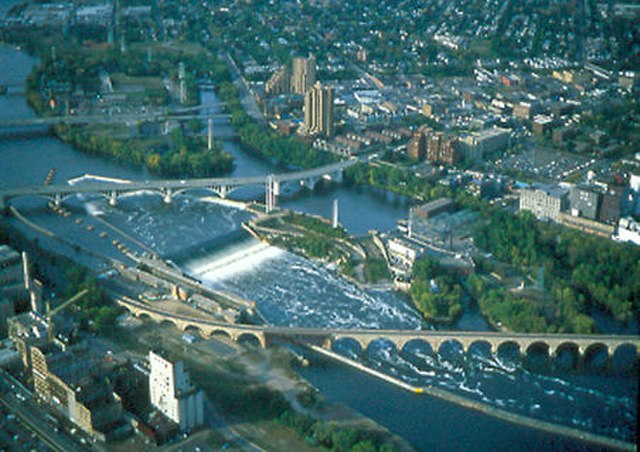Minneapolis–Saint Paul is a metropolitan area in the Upper Midwestern United States centered around the confluence of the Mississippi, Minnesota and St. Croix rivers in the U.S. state of Minnesota. It is commonly known as the Twin Cities after the area's two largest cities, Minneapolis and Saint Paul. Minnesotans often refer to the two together simply as "the cities". The area is Minnesota's economic, cultural, and political center.
Image: 2008 0712 MPLS pan 00 mp edit
Image: Saint Paul skyline, West Side (cropped)
St. Croix River in Stillwater
St. Paul with barges on the Mississippi River, the Capitol dome, and Minneapolis's skyline in the far background (right of St. Paul). In the lower right is a typical 19th century home in Indian Mounds Park.
The Mississippi River is the primary river, and second-longest river, of the largest drainage basin in the United States. From its traditional source of Lake Itasca in northern Minnesota, it flows generally south for 2,340 miles (3,766 km) to the Mississippi River Delta in the Gulf of Mexico. With its many tributaries, the Mississippi's watershed drains all or parts of 32 U.S. states and two Canadian provinces between the Rocky and Appalachian mountains. The main stem is entirely within the United States; the total drainage basin is 1,151,000 sq mi (2,980,000 km2), of which only about one percent is in Canada. The Mississippi ranks as the thirteenth-largest river by discharge in the world. The river either borders or passes through the states of Minnesota, Wisconsin, Iowa, Illinois, Missouri, Kentucky, Tennessee, Arkansas, Mississippi, and Louisiana.
The Mississippi River in Iowa
The source of the Mississippi River at Lake Itasca
The first bridge (and only log bridge) over the Mississippi, about 25 feet south of its source at Lake Itasca
Former head of navigation, St. Anthony Falls, Minneapolis, Minnesota








